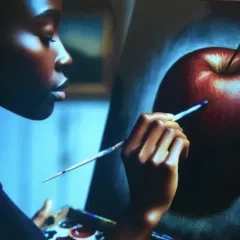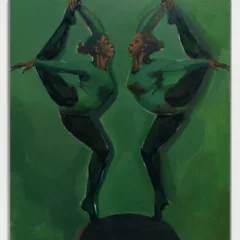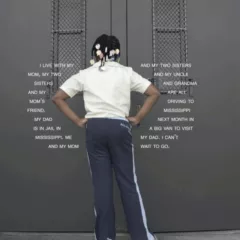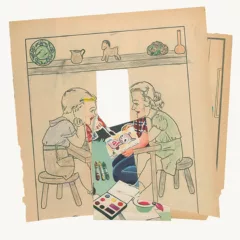Art Basel Miami, et cetera: a challenge
I visited Art Basel, and a number of the satellite fairs in Miami, in December. Other than warm weather, I didn’t know what to expect. Nor did I have an idea of what, if anything, I might write about the experience. An artist friend suggested I eavesdrop on conversations at the fairs and report about them. That did not pan out, but I hoped at least that I might stumble upon an artist who I was inspired to write about.
It is not clear to me who is served by these mega art fairs, for the simple reason that one can absorb only so much art in a day, or in a few days, before reaching a point of visual and emotional saturation and overload.
Indeed, even though I forced myself to meander, slowly, to resist the temptation to move quickly in order to see as much as possible, it was too much for me. As a result, I saw only a small portion of the artwork on display, and much of the work that I did see, I did not see.
Untitled Art Fair, in a tent, on the beach
On my last day in Miami, I visited Untitled, Miami Beach, a much smaller fair than Art Basel, housed in a huge white tent sitting smack on the sands of South Beach. Although still international in scope, Untitled included 136 galleries, non-profit institutions/organizations, and artist-run exhibition spaces, compared to Art Basel’s 400 galleries. I wondered whether Untitled, which was founded in 2012 and bills itself as “an international curated art fair that focuses on curatorial balance and integrity across all disciplines of contemporary art,” might reflect a greater consciousness of the profound social, political and environmental events of 2017. I was not disappointed.
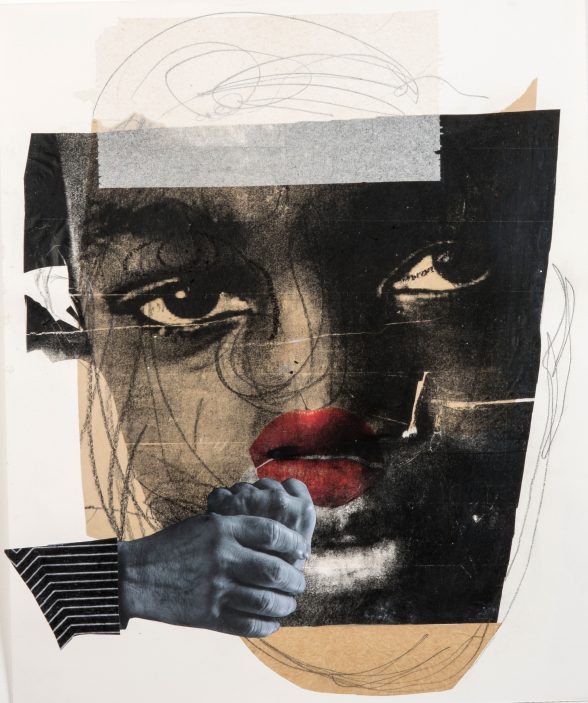
Deborah Roberts and her crisp, exquisite collages of black girls
At Untitled, I came upon a few examples of the work of Deborah Roberts, a largely unknown African American artist in her fifties, from Austin, Texas. Roberts’s crisp collages of African American girls and other works were being presented by the New York City gallery Fort Gansevoort. What struck me about the work was the artist’s uncanny ability to capture the soulfulness and determination of these young people through exquisite positioning of body parts and facial features cropped from the internet and from magazines.
In-gé-nue
When I returned home from Miami, I visited Fort Gansevoort, which then was hosting a solo exhibition of Roberts’s work, In-gé-nue, featuring over 20 of her mixed media, collaged portraits of young African American girls between the ages of 8 and 11. These are no ordinary portraits. Rather, they reflect the complex self-images and the plaintive, sometimes fierce spirits of these young girls in the face of the powerful, fragmenting forces that they are exposed to in our society, and particularly by popular culture.
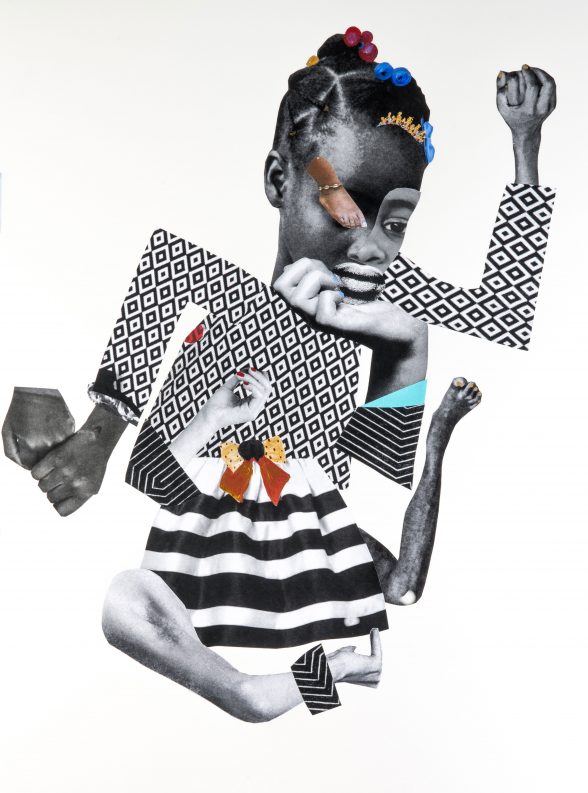
As in so many American cities, the once vibrant, although highly segregated African American neighborhoods in Austin have shrunk and deteriorated during the last decade, subject to a wave of gentrification that pushed people out who could not afford to live there anymore. From the outside, it is difficult to imagine the experience of young African American girls in that environment, the coincidence of poverty, segregation, and racism with the glitz and pressure and stereotypes rained upon them by ubiquitous social media, television, and the world of fashion. It is that collision, that experience, that Roberts brilliantly, though painfully, brings to life in her work.
Many of the source images are clipped from the media, dissected and reconstituted, and presented disproportionally, seemingly disintegrated. But what at first appears incongruous — a swollen fist, a spindly white arm (or a malnourished one), a trivial hand covering an eye — ultimately coalesces to reveal a symbolic importance. The composite images reflect the disruptive forces these individuals are exposed to, but at the same time suggest the possibility, potential, and value of unification.
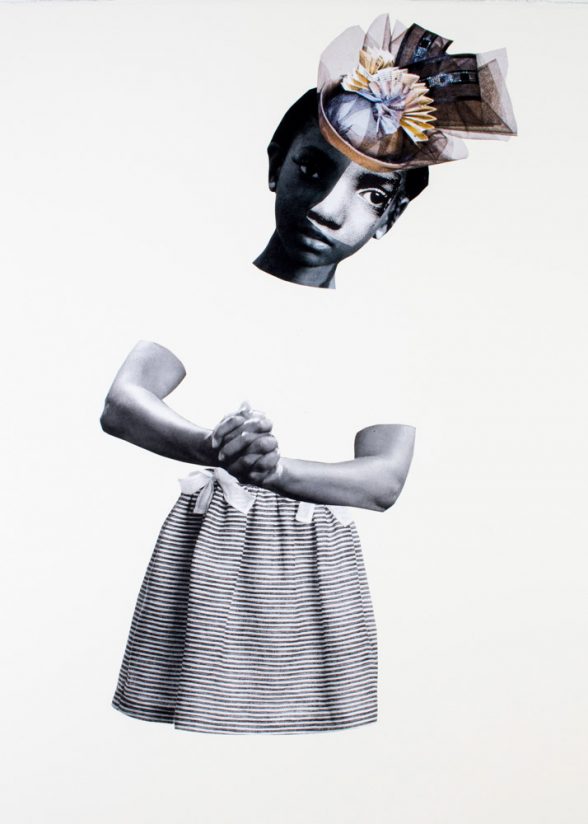
On the one hand, the figures, centered in a void of white space and almost always alone, are the victims of outside pressures, often internalized, which confuse them and threaten to tear them apart. On the other hand, they remain resolute. They retain many of the vestiges of innocence in a world that is yanking them prematurely towards a bleak adulthood. Pay attention to their eyes, their hands, and to the lovely textiles, and wonder: What is beautiful? Their eyes are always open and always strong, like those portrayed by the German Dadist Hannah Höch, and their fists are raised or clenched. These young ladies are often on the move. They are survivors — they have been injured, but they will not be hobbled or disabled.
Roberts’s inspirations in Romare Bearden and Wangechi Mutu
It has been noted that Roberts’s work is inspired by the likes of Romare Bearden and Wangechi Mutu. Yet, neither of those great African American artists paused upon and captured, as Roberts has, the self-consciousness and identity issues of this age group of young, urban, African American girls.
The plight of children among the tragically proliferating vulnerable populations in our society is too often overlooked. Roberts shines a spotlight in their direction, with an unusual and remarkable combination of pathos and hope, and we should be as grateful for that as we should be outraged by the conditions that make their lives so stressful.
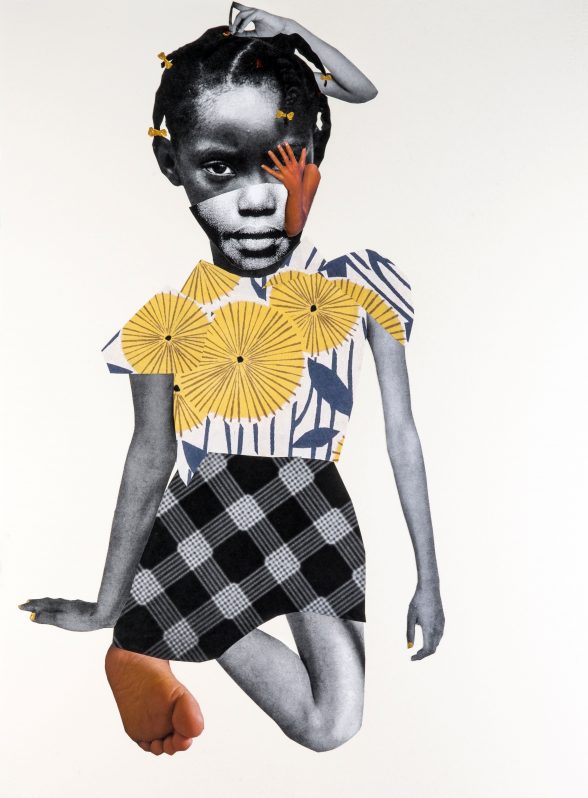
My sense is that in middle age, Deborah Roberts has transformed herself from a self-described conventional artist to a dynamic observer and agent of social change. She is not yet widely recognized, and very little has yet been written about her. I suspect that is about to change.
Deborah Roberts received an MFA from Syracuse University, and was a recipient of the Pollock Krasner Grant in 2016. In addition to showing at Fort Gansevoort, her work appears in Fictions at The Studio Museum of Harlem. Beginning on January 23rd and running through Mary 19th, the Spelman College Museum of Fine Art in Atlanta will be the site of a solo exhibition of over fifty examples of her work created between 2012 and 2017 – The Evolution of Mimi.


